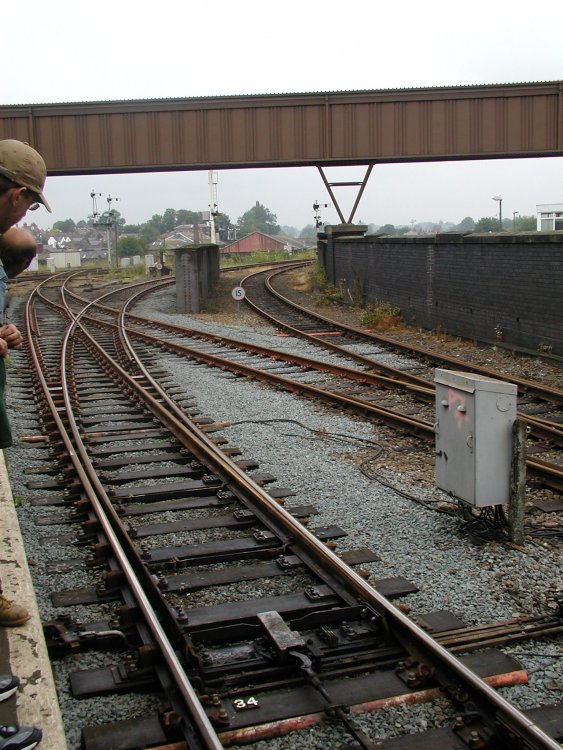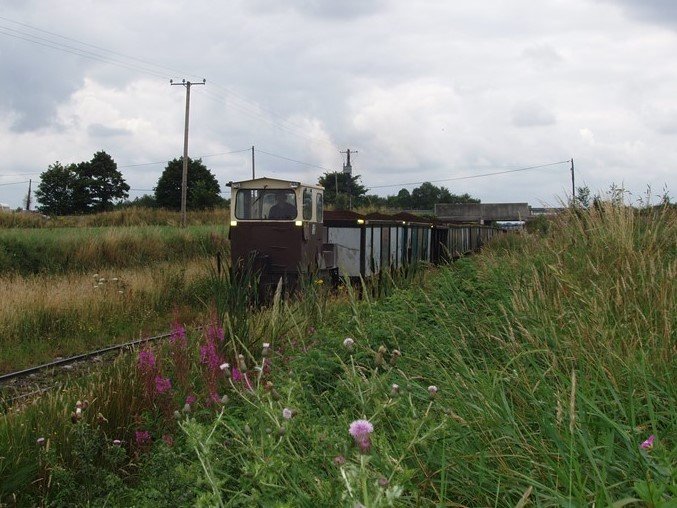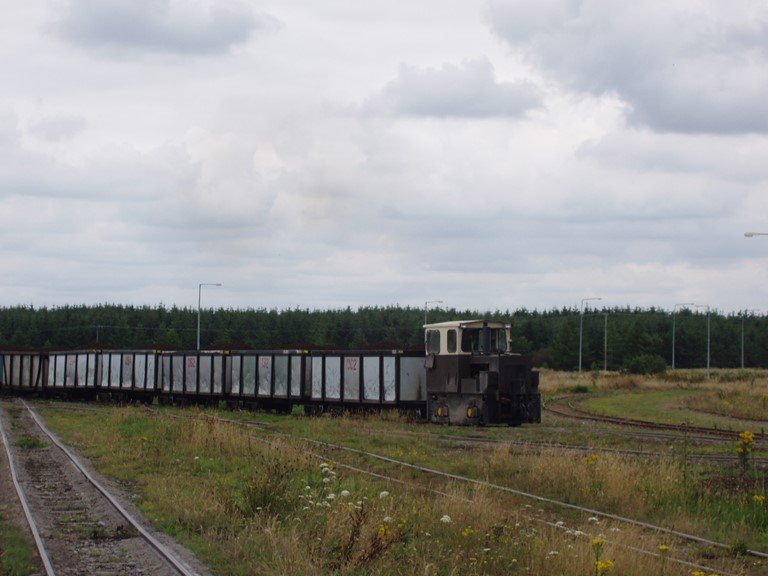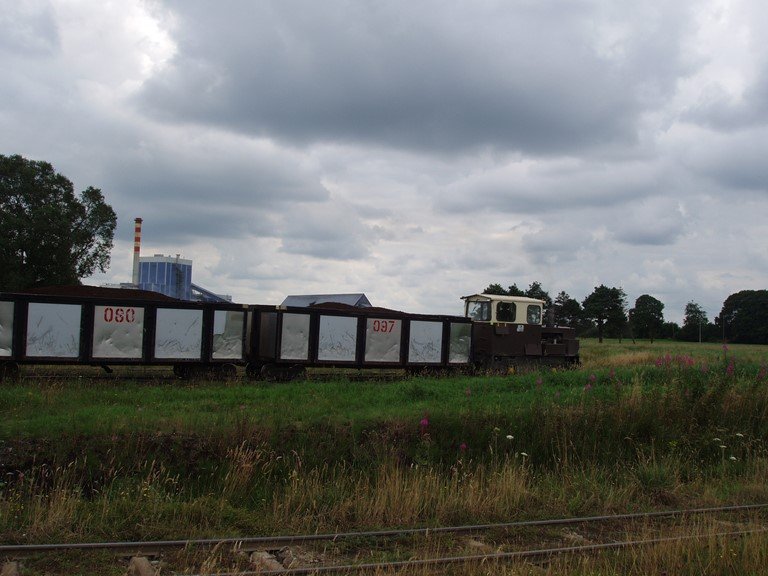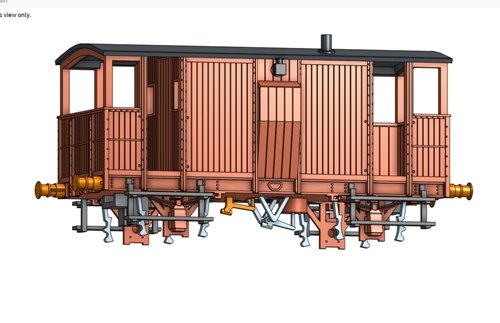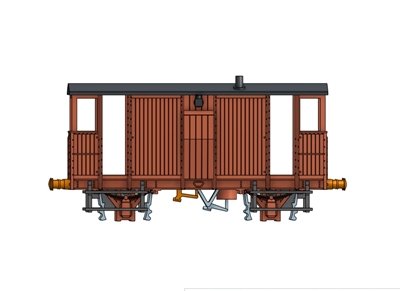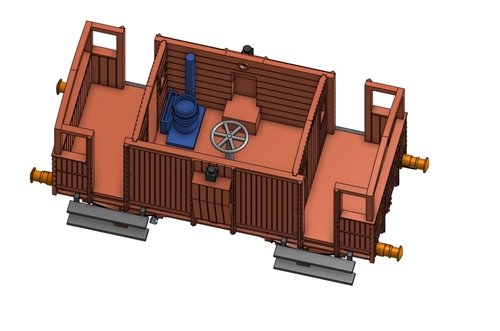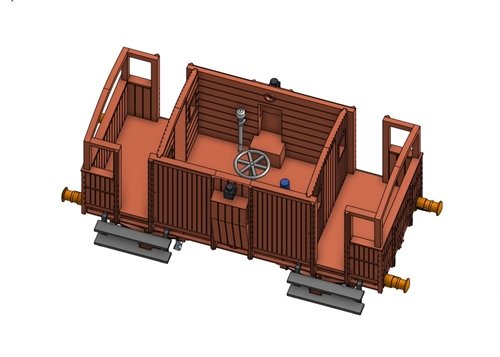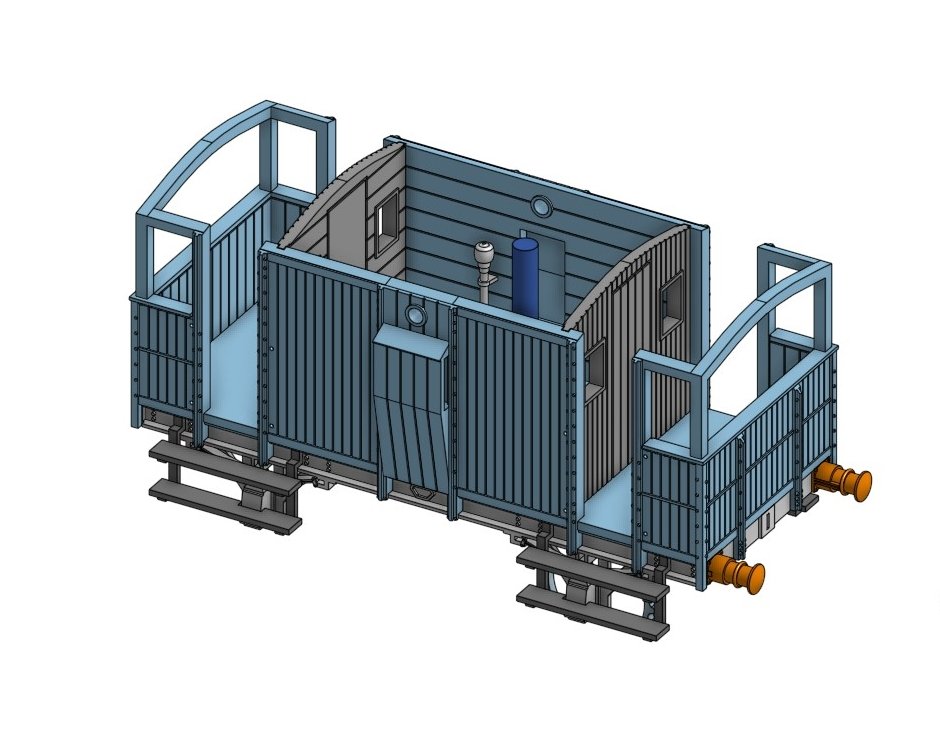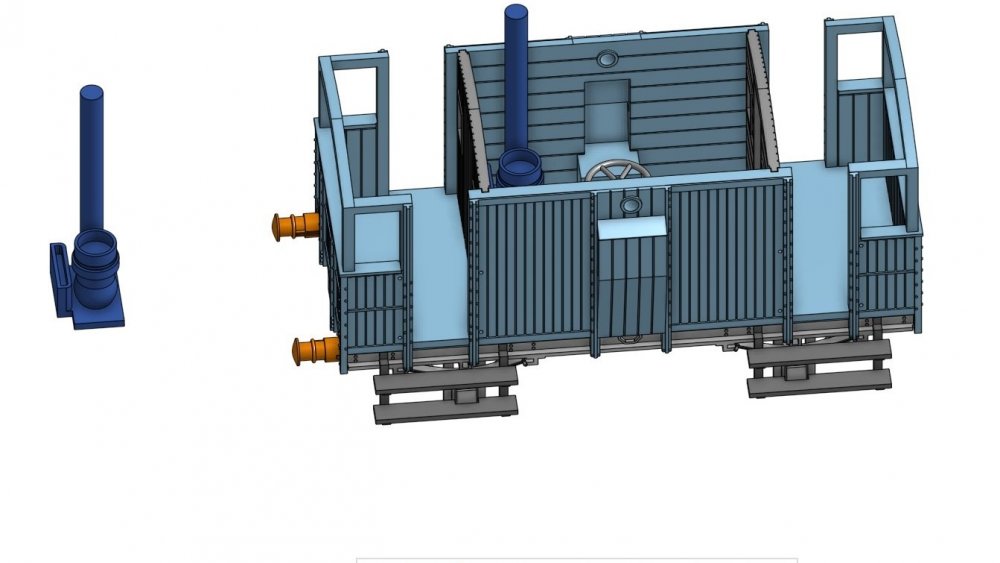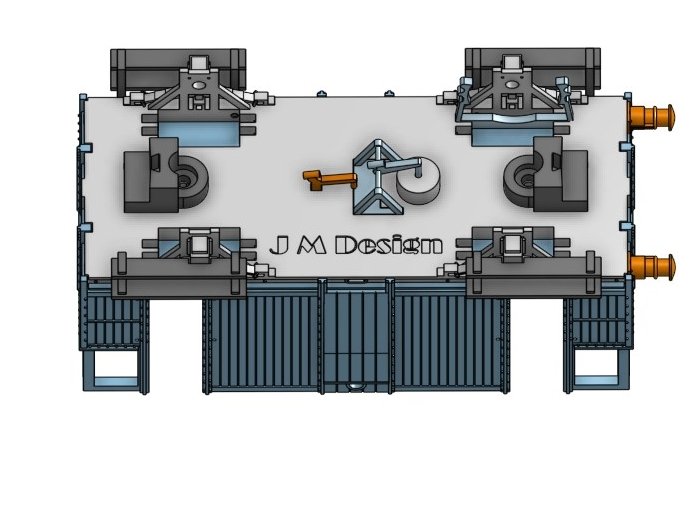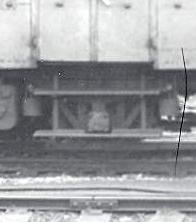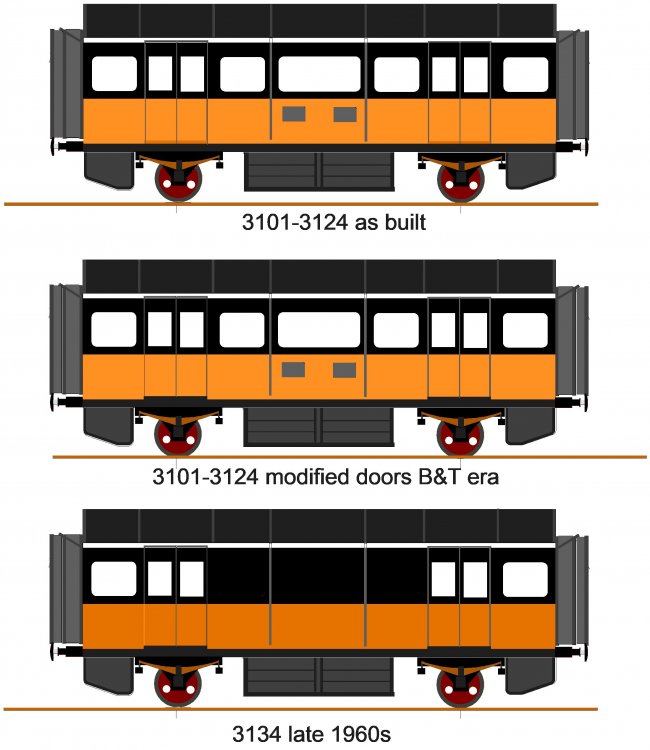-
Posts
4,873 -
Joined
-
Last visited
-
Days Won
119
Content Type
Profiles
Forums
Events
Gallery
Everything posted by Mayner
-
From the horses mouth so to speak Railway Construction by William Hemingway Mills (former GNR(I) Chief Civil Engineer) Late Victorian/Edwardian civil engineering best practice. https://www.gutenberg.org/files/50696/50696-h/50696-h.htm Full size tie bar and facing point lock. Newly installed connection between up Chester & Crewe lines Shrewsbury circa 2000 GWR style semaphore signals still in use at North Junction.
-
It you can come to an agreement with a designer an Irish or UK based printing service with SLA capability is likely to be a better option than Shapeways. https://www.google.com/search?q=3d+sla+printing+services+UK+and+ireland&rlz=1C1CHBF_enNZ752NZ752&oq=3d+sla+printing+services+UK+and+ireland&aqs=chrome..69i57j0.18285j0j9&sourceid=chrome&ie=UTF-8 SLA printing will produce similar results to plastic injection moulding and can be used to produce a pattern for vacuum casting (min vol 40 units) or small volume production. If you are unable to come to an agreement with CMAC, most locally owned 3D printing businesses should be able to recommend a 3D designer who understands the limitations of the technology and material and has experience in designing models and miniatures.
-
Some photos of the assembled test build of the 52 Class, I am currently finalising a number of amendments to the design before I release the production version at some stage in late 2020 early 2021. The kit will be supplied with brass and whitemetal castings, but will exclude wheels gears and motor and couplings. There is more detail on the assembly of the loco in my Tales from the Carriage Shops thread in the Workbench section of this newsgroup.
- 8 replies
-
- 11
-

-
A collection of GSR broad and narrow gauge loco drawings including GSWR Classes was published with New Irish Lines in recent years. The publisher of New Irish Lines Alan O'Rourke should be able to help if you want copies of particular diagrams. Updates on progress with the JM Design 52 Class/D17 kit including photos of a test build are available in the Manufacturers section of this website.
-

General Motors GM6 six-wheeled locomotive similar to a 121
Mayner replied to jhb171achill's topic in General Chat
GM produced a 3' gauge version of its GA8 Export Model for use in Mexico https://en.wikipedia.org/wiki/EMD_GA8#/media/File:NdeM_5406_(27443008661).jpg the GA8 model is visually similar to the B121 Class but is simpler mechanically and electrically, running on freight wagon trucks, with two traction motors mounted in the body with chain drive to the axles. Something more powerful than the Walker locos may have been required to haul trains over Barnesmore Gap and the Strabane-Letterykenny Line had freight traffic held up during the 1960s. Another possibility would have been to produce a B-B version of the GM6. Clyde Engineering produced similar locos for Victoria and Western Australia Government Railways during the 1960s by combining the 6-567C engine and main generator used in the GM6 with a Bo Bo chassis and running gear. https://en.wikipedia.org/wiki/WAGR_J_class_(diesel) https://en.wikipedia.org/wiki/Victorian_Railways_Y_class_(diesel) -
Point and crossing work assembled usually assembled using standard switch and crossing components with the rails between the switch and crossing tailored to form a particular formation, in practice 1:6, 1:8 & 1:10 crossing should be adequate for most applications. The EM Gauge Society members received a detailed manual https://www.emgs.org/wp-content/uploads/MANUAL_1_2_3_1_pages_all.pdf on prototype and model track construction including information on the different systems and assembly techniques including switch and crossing filing and assembly jigs. TOM Trackwork Standards can be easily extrapolated from the EMGS Standard and EMGS track, point and crossing jigs can be blown up to 21mm gauge on a printer or photocopier if you are not too worried about a marginally wider sleeper spacing. As Rick L suggested the best option is probably to build a small test track or a shunting plank with a couple of points and possibly a crossing as a test bed before committing to building a layout. Going back to prototype trackwork, yard and siding trackage on the CIE/IE system was generally laid in relatively light flatbottom rail on base plates or spiked directly to the sleepers, with bullhead restricted mainly to running lines and passing loops. The photo of the south end of Limerick Junction is a good example, the headshunt from the Waterford Bay with passenger train is laid in bullhead material, while the sidings between headshunt and the Cork Main Line appear to be laid in light flatbottom rail. Peco Code 60 Rail https://peco-uk.com/products/code-60-flat-bottom-rail for sidings, Code 75 or Code 82 for running lines if you want to re-create the contrast between 80, 85, 90 and 95 lb British Standard rails used up to the introduction of metric Standard BS/EN and UIC standard rails by CIE from the 1970s onwards. I got to learn perhaps too much about trackwork volunteering on a UK heritage railway including assembling full size 60cm gauge pointwork. Loco and stock on Peco Code 60 rail soldered to copper clad sleepers, Code 82 rail on lines in foreground. The layout was not a success I made the mistake of not allowing enough space in the 6' between parallel lines as they entered the curve and problems getting the double slip points to function correctly.
-
Edenderry Power Station (R401 Edenderry-Rathangan Rd, West Offaly Powerstation (Shannon Bridge)R357 Shannonbridge-Tullamore Rd & Lanesborough Power station should be good places to observe BNM Energy Divisions rail operations. I griced BNM operations in Kildare and Offaly in the 90s and the newly opened Edenderry Station about 15 years ago. West Offaly Rail operations were readily visible from both the R357 & R436 including a loco stabling depot near Ferbane and Blackwater Works. There are/were a number of smaller isolated systems mainly in Kildare, Offaly and Westmeath these tend to be smaller in scale and have more in common with the Peat Railways in the UK, than the systems serving the peat fired power stations. BNM Energy Division rail operations are/were a basically scaled down 3' gauge 365-24/7 "Merry-Go-Round" train operation with fixed formation trains of (15) tippler wagons transporting milled peat rather than coal from stock piles to the power station. The "Clonmacnoise and West Offaly" tourist railway and museum of the early 1990s originated as a Fás scheme for redundant BNM Blackwater staff and appears to have developed into a successful tourist operation catering mainly for coach tours. Blackwater tourist train operations appear to have been discontinued because the tourist train operation was disrupting the flow of peat to the new West Offaly Power Station . The whole business of de-commissioning three recently built relatively low emission power stations rather than conversion to burn home grown bio-mass reminds me of the Greencore saga with the closure of the Irish sugar industry and seems to have very little to do with reducing Irelands overall greenhouse emissions while leaving the coal burning Moneypoint power station on line. Operation at Edenderry Power Station was/is interesting as trains from the West had to reverse direction in order to enter the power station. Train 1 passing under R401 underbridge arriving from Mount Lucas direction. This section of line is double tracked. Train 2 has coupled on to Train1. Loco Train 1 has uncoupled and is running forward on second running line. Loco of Train 2 pulls Train 1 & 2 clear of crossover as former loco of Train 1 prepares to couple on to Train 2. Track is typical BNM 'Main Line" with evidence of heavy sanding to keep trains moving. De-railed or defective stock was simply pushed to one side to minimise disruption to operations. Train 2 approaching Edenderry Power Station. Train 1 crossing over from "Main Line" to power station reception roads. Trains 1 & 2 approaching tippler building as an empty train departs on the balloon loop.
-
Your layout concept is ambitious and you seem to have the space to fulfill your ambition. Building such a layout in 21mm gauge with handlaid track would be a lot more time consuming, perhaps taking 2-3 time longer than in OO using flexible track and ready to lay points, but the choice between OO & 21mm really boils how to how you prefer to spend your modelling time building models or operating a model railway/running trains. The difference in gauge is less noticeable and the view more realistic if the baseboards/track level is closer to eye level. Bullhead track was the standard form of permanent way on the Dublin Cork and Waterford-Limerick main lines from the 1900 or earlier, heavy (95lb) flatbottom rail was increasingly used for main line renewals from the 1950s onwards, CWR on concrete sleepers was trailed on the Dublin-Cork line during the mid 1970s, before becoming the standard permanent way for main line renewals. The Dublin-Cork main line was re-laid with CWR during the 1970s & 80s as CTC signalling was gradually extended southwards, Limerick Junction-Limerick may have been re-laid with CWR during the 1980s. The Limerick Junction-Waterford Line was likely to be laid with a mixture of CWR, jointed bull head and jointed flatbottom track. Jointed bullhead or and flatbottom track was likely to have been retained at Limerick and the Junction until the stations were re-signalled/layouts rationalised during the last 20 years. Photographs of a particular station or stretch of line is probably the best option if you want to model Irish track in detail due to the mixture of track material in use and condition even at a single station
-
The brake van is designed to run on OO or 21mm gauge track. We are looking at a number of options for manufacture including 3D printing and vacuum castings locally (NZ) or the Far East, at this stage we are unable to confirm whether the model will be produced as an un-decorated kit or a decorated model.
-
Preview of the latest version of the CAD work for the brake van. Its planned to supply the van with NorthYard NMRA RP25 Code 110 plated brass wheels with acetal centres on blackened brass axles set to OO gauge and Bachmann tension lock couplers with NEM pocket. The next stage is to produce a SLA printed pre-production prototype to check fit and durability of parts before progressing to the production version.
- 62 replies
-
- 12
-

-
Going off topic I enjoyed the video especially the ploughing in the background at Gormanstown and 171 to Galway and return. Some odd stuff taking place on the Midland, the signalman routing the empty Esso and Up passenger through the loop rather than the main running road at Killucan and the signal man at Athenry bringing an Up passenger to a halt on the Oranmore side of the level crossing, at the time infrastructure on both Galway & Sligo lines was in a poor state due to years of deferred maintenance, requiring interesting "work arounds" by staff on the ground to keep things moving.
-
Many of the earlier American Road Switchers were set up to run long-hood or bonnet forward as it gave better collision protection to train crews, Norfolk & Western, Southern Railway later Norfolk Southern were the last of the major American railroads to hold on to this tradition. There is a story that when originally introduced some drivers turned the B121 locos to run bonnet first. Grills/louvers were fitted to the cab doors of the B121 Class and a requirement to run cab first was introduced following an incident involving a p.w. workers at Straffan in the early 1960s. T The p.w. gang had placed detonators and a flagman to protect a possession while replacing a rail, apparently the loco crew may not have noticed the flagman because of poor sighting or have heard the detonators (sound insulated cab) to stop before entering the possession. The grills/louvers disappeared from the cab doors at some stage during the IE eras.
-
Several of the proposed schemes in Ireland could come with a hefty price tag to compensate existing landowners as lines like the SLNCR & West Clare were abandoned and the trackbed mainly sold to adjoining farmers. There are a number of examples of heritage railways co-existing with cycleways and bridlepaths including the Waterford & Suir Valley, Carenarfon-Dinas section of the Welsh Highland and Northampton & Lamport in the East Midlands. Interestingly about 10 years ago the New Zealand Government considered converting sections of the national rail network as part of the National Cycleway Project to stimulate the economy in the wake of the 2008 Great Financial Crisis. https://en.wikipedia.org/wiki/New_Zealand_Cycle_Trail. In the end someone pointed out that rail was essential to export industry and no operational lines were converted to cycleways though a number of mothballed lines were converted to rail carting operations. The National Cycle Way and various rail carting operations has been good in supporting local economies in remote areas where rural -depopulation has become a serious problem with the decline in traditional small scale framing and rural support industries Rail cycling (Velo Rail) http://veloraildefrance.com/ and Rail Carting https://www.forgottenworldadventures.co.nz/routes-and-trails/category/2/rail-cart, would seem to be good alternative uses to Cycleways for "mothballed" lines, but liability issues with level crossings and a new and novel form of rail operation would probably be un-surmountable problems in Ireland
-
It looks like Drimoleague may have discovered a rare find & it looks to be in quite good condition. There is a photo of 203D an ex-Dublin Wicklow & Wexford Railway (DWWW) bogie coach with similar paneling arrangement and profile on page 27 of Des Coakham's Irish Broad Gauge Carriages. The second photo with the open door indicates that the coach has a slight tumblehome in the sides rather than being slab sided. 203D appears to be one of a pair of 44' bogie coaches built by Birmingham Carriage and Wagon in 1895 before Richard Cronin took over as engineer and began introducing coaches with a high parabolic roof that became a distinctive feature of DWWW and later Dublin and South Eastern Railway Coaching stock. Its possible that there may be photos of similar coaches in Ernie Shepherds Dublin & South Eastern pictorial.
-
The CIE 20T brake vans are listed in the 23500-23664 series introduced in 1950 in both "Irish Railways Today" and "Locos and Rolling Stock of CIE and NIR". There appears to be considerable detail difference between individual vans as many appear to have been rebuilt with pressed metal lookouts and planking obscured/replaced with aluminium or ply sheeting as vans were re-built during the 1960s. The model is based on a broadside photo of 23586 that appeared in an article on CIE/GSWR Brake Vans the February 1977 edition of Model Railways. Its likely that pressed metal duckets and aluminium/ply sheeting was fitted on an ad-hock basis when body work on individual vans required major repair/replacement, 23508 one of the earliest of the series appears to have been re-built at some stage with metal duckets and body sheeting, while retaining vertical veranda planking.
-
Our original plan was to design a van that could be retro-fitted with functioning lamps. Fitting the van with working lamps would have added considerably to the cost and complexity of the model. At this stage we have designed the lamps as a solid due to problems in designing a hollow lamp housing with adequate wall thickness. TimO We are not planning to fit the van with torpedo vents, there appears to have been a lot of detail variation between van in later years the photo of 23544 is the only 20T van that I have seen with torpedo vents.
-
Approaching another milestone in the design process as we finalise the CAD work before we produce the prototype for the production model. There are a few final tweaks to be made to the CAD work including trimming the stove pipe to fit within the roof and adjustments to the buffers and brake gear and fitting the side lamps. All going well we expect to have a pre-production sample ready in approx two to three weeks.
- 62 replies
-
- 11
-

-
To provide clarification, I am planning to supply the models as kits as I am not currently undertaking rtr commissions. The TPO was supplied with parts to assemble the van in its original condition as a PO Van or as a PW riding van similar to that preserved at Downpatrick. There is a detailed thread on assembling a Tin Van on p3- in Georges Workbench.
-
Although a number of 21mm gauge layouts have been built to EM gauge standards, I don't know if anyone has actually built a layout to 20.2mm gauge. 20.2 appears to have been developed by Martyn Wynne as an EM gauge +2mm in a similar manner to his advocacy of 16.2 mm as EM-2mm for OO. In practice it is perfectly feasible to build a 21mm layout to EM gauge running clearances with a back to back gauge of 19.3mm & a wheel check gauge of 19.95 using EM profile wheels. The use of EM standard wheel sets should not have a significant distorting effect on the width of a model as the difference in wheel set width between the two standards is marginal, as the effects of the difference in back to back gauge and tyre width largely cancel each other out 21mm B-B TW WOWS EM 19.3 2.28 23.86 P4 19.92 2 23.92 Max P4 19.84 1.85 23.54 Min 23.73 Avg.
-
I am updating the Heating & Luggage and Luggage Van kits in a similar manner to the TPO with an additional set of sides, to allow a different variation of the model to be assembled. The Post Office Van was designed to be assembled in its original form or in their rebuilt for as P.W. Tool Vans which were used with Weedkiller & track re-laying trains in the 80s & 90s one of these vans survived as the "Heuston Tool Van" and now resides at Downpatrick. Heating & Luggage Variations. The kit includes alternate sides to assemble the model as a 3101-3124 series van or as 3134 with a number of boiler room and luggage compartment windows replaced by plain panels. 1. 3101-3124 As built 1955 with bottom edge of outward opening doors flush with bottom edge of floor and sides. 2. 3101-3124 With modified outward opening doors late 1950s onwards. I have incorporated a half-etched line on the inside edge of the doors, to allow the bottom edge to be neatly snapped off for this modification. 3. 3134 with blanked off boiler & luggage compartment doors. I don't know if 3134 was built in this form or the blanked off windows were a modification as 3134 appears to be from a later series of vans. The final (1959-60?) batch of Tin Vans" were built with recessed inward opening doors, but have the same window and vent details as the original 1955 vans. Luggage Van Variations. The kit includes alternate sides to assemble the vans in their original form or as 2749 with a number of windows replaced by plain panels. The replacement of glazed with plain panels appear to have been ad-hoc repairs to keep the vans in service. There is a photo of one van (2727) single plain panel. The 4w Luggage Vans were withdrawn from service in the early 70s following the introduction of the BR Vans & the conversion of older coaches into Vans (BSSGV & Parcel/luggage) A small no of 4w Luggage Vans were retained for Connolly-Dunlaoire Pier Mail and Parcel trains, these vans were restricted to 35mph lost their gangways and were re-painted in all over "Golden Brown" similar to the contemporary Dublin City bus scheme. Some redundant Luggage Vans had a final main line fling, rebuilt into two rakes of "coaches" for the First Great Train Robbery movie with main line steam running behind 184 & 186 on the Mullingar-Athlone Line.
-
The DSER rebuilt 64 Earl of Bessborough (GSR427) with a high pitched boiler and DSER cab so that it was almost un-recognisable as a LNWR 4'6" tank, there is a photo of 427 about half way down Page 7 on JHBs From the Catacombs thread. The Mercian LNWR 5'6" radial thank might be a better option than a 4'6" tank for an Irish conversion as WLWR 13-14 (GSR 267 & 491) have a striking resemblance to the LNWR locos including cab and bunker profile.
-
Some good news Clare County Council approved a planning application for a 1506SqM Railway Museum at Moyasta during Nov 2019. https://www.planningalerts.ie/application?pref=555AA620181195A5C00024809833CEAC097DFD I don't know if the application relates solely to a museum/store for ITG stock or a West Clare MuseumThere is a €29.37 subscription to view the file on-line. The ITG had applied and failed to obtain planning permission several years ago as a large industrial (museum) building would have been out of keeping with the open (windswept) landscape of the area The ITG web site admits that some of the locos are long term restoration projects and some are simply stored as a source of spares.
-
I have received enough expressions of interest to proceed with a second batch of these kits for release in late 2020. Please send send me a p.m. or respond to this thread if you are interested in placing an order. Heating & Luggage. Luggage Post Office Van
-

Ernies Massive Irish 1930's to 2005 Photo Archive
Mayner replied to Glenderg's topic in Photos & Videos of the Prototype
There is a series of photos of the Bann Viaduct on https://www.geograph.ie/snippet/3725. It looks like the viidaudct opens for shipping. -

Ernies Massive Irish 1930's to 2005 Photo Archive
Mayner replied to Glenderg's topic in Photos & Videos of the Prototype
There are a number of photos of the 15 March 1959 Baltinglass Fair Special in the O'Dea Collection in the National Library, this appears to have been the final revenue working on the Tullow Branch. The train appears to have acted as a positioning run for the branch lifting train the loco continued to Tullow with the coaches and P.W.D stock after dropping the cattle wagons at Baltinglass. http://catalogue.nli.ie/Collection/vtls000148612/Home?lookfor=tullow&filter[]=era_facet%3A"1950-1960"&filter[]=authorStr%3A"O'Dea%2C+James+P.+1910-1992+photographer"&filter[]=topic_facet%3A"Railroads"&submit=Apply It looks like the photo of the Sleeping Van and pwd. stock was taken at Dunlavin (concrete station building and loop lifted) http://catalogue.nli.ie/Collection/vtls000148612/Home?lookfor=Dunlavin&filter[]=era_facet%3A"1950-1960"&filter[]=authorStr%3A"O'Dea%2C+James+P.+1910-1992+photographer"&filter[]=topic_facet%3A"Railroads"&submit=Apply T
.png.c363cdf5c3fb7955cd92a55eb6dbbae0.png)

